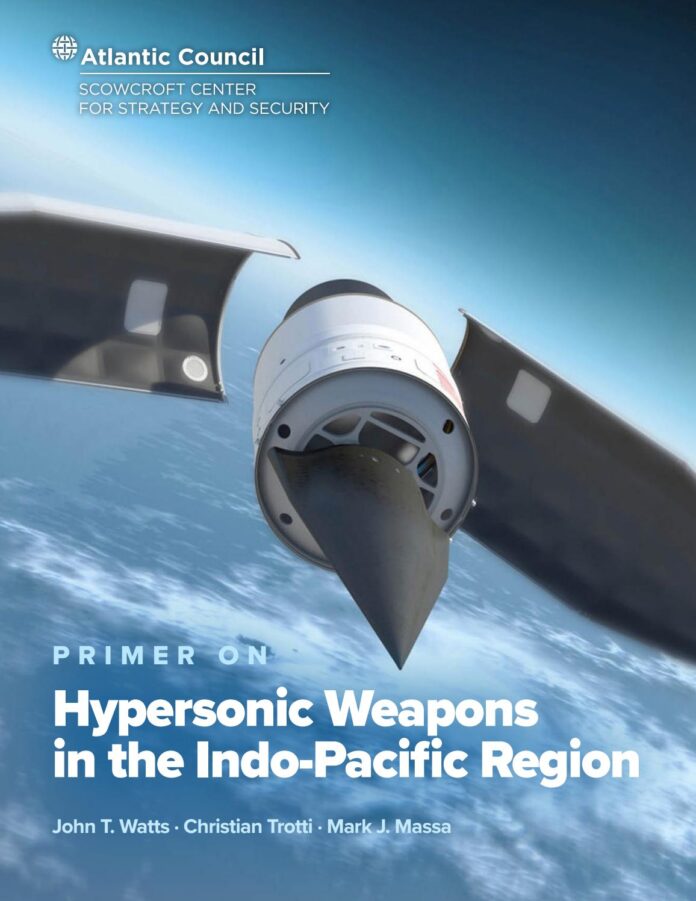Alfred Thayer Mahan’s geopolitical vision of sea power and the significance of a protective system for organized warfare is more relevant today than it was a hundred years ago. The Indo-Pacific has become a geographical locus of all three major powers, with middle powers following in their footstep, containing potential flashpoints of conflicts that can trigger conventional military confrontation and a race for dominance in the region. On March 28,, US president Joe Biden announced that the USA will reinforce its role in the Indo-Pacific region and will extend its cooperation with longtime allies with a specific focus on defense and security along with emerging technologies. The Biden Administration has announced a budget of $ 1.8 billion to support the Indo-Pacific strategic encounter.
In the near future, the region will witness the deployment and use of hypersonic missiles, as part of advanced technologies, which will radicalize the regional strategic dynamics. The US allies and partners in the Indo-Pacific region are focusing on enhancing their defense capabilities. Japan has a goal for a Mach 5 + hypersonic scramjet by 2030. Recently, it was announced under the Quad umbrella that the US and Japan have to sign an agreement on advanced research and development of hypersonic missiles. Similarly, Australia is planning to advance its capabilities in longer-range missiles. On April 5, AUKUS members announced a new trilateral alliance on joining the development of hypersonic and counter-hypersonic missiles.
India, another major ally of the USA in the Indo-Pacific region is also focusing on enhancing its missile defense system in order to tilt the regional balance of power in its favour. India has developed its first BrahMos missile and is now working on a follow-up BrahMos II with a peed of Mach 7. On March 9, India accidentally landed a BrahMos 124 km inside Pakistani territory. This inadvertent strike by India instigated a debate on hypersonic warfare and its impact in South Asia. The missile attack was a alculated act by India to access Islamabad’s “response spectrum.” Since there was no ongoing crisis, Pakistan acted with restraint but in a crisis situation, Islamabad is unlikely to show this restraints and this potentially could lead to a nuclear strike.
With this undermining of the Indian safety and security posture, it becomes crucial for Pakistan to adopt a possible countermeasure. The race for advanced technologies is extended beyond major powers and it is compulsory for South Asian states to boost their defensive capabilities preemptively in order to retain the strategic stability in the region.
Pakistan has recently tested its ballistic missile Shaheen III, which is a defensive addition to its weaponry, however in the supersonic and hypersonic domain Pakistan still lags behind India. In response to the recent attack, Pakistan needs to focus on boosting its capabilities in supersonic and hypersonic missile technologies. So far, Pakistan has viewed the hypersonic race in the Indo-Pacific as a power competition of ascendency between the USA and China, however with recent incidence, Islamabad is cautious about the security and safety against supersonic and hypersonic on its border. It is likely that China will assist Pakistan in developing a Hypersonic Glide Vehicle missile (HGV).
A more militarized India has time and again threatened Pakistan’s minimum credible deterrence. Hypersonic weapons are offensive weapons with short reaction times that could potentially prompt conflict at the conventional level, causing an inadvertent escalation. To substantiate its defensive fence, Islamabad needs to spend wisely in order to boost its defensive capabilities. A preemptive strategy is required to counter any supersonic and hypersonic attack by India. Pakistan has built modern subsonic cruising Babur/Harbah and Ra’ad series al ong with the CM-302 Type-054A/P frigate programme. It seems Pakistan will pursue its own supersonic-cruising LACM through potentially the HD-1A, which China marketed as an option for the JF-17. Having said that, Pakistan still has not developed the land-based hypersonic missile defense system which is important for countering in a strategic domain.
Moreover, It is important to notice that the hypersonic race and missile development have come at a time of crumbling international architecture. States leading in this missile race are aligning themselves in blocs and coalitions which would further deepen the arms race and will bring regional and global instability. Indian advancement in missile systems along with its delinquent behaviour in the safety and security of missiles will undermine nuclear deterrence. In a similar scenario addition of hypersonic missile capabilities will further enhance India’s offensive counterforce posture.
With this undermining of the Indian safety and security posture, it becomes crucial for Pakistan to adopt a possible countermeasure. The race for advanced technologies is extended beyond major powers and it is compulsory for South Asian states to boost their defensive capabilities preemptively in order to retain the strategic stability in the region
Hypersonic weapons are included in the vital capabilities of major powers in the Indo-Pacific region, while semi-periphery states in the region are trying to match these capabilities. This has implications and compels these powers to preemptively adopt new ways to counterbalance and mitigate or develop advanced technologies otherwise the potential fait accompli defeat will become their fate. Great powers need to avoid arms races as Patrick Morgan rightly said that arms control thinking can reinforce the emphasis on stabilizing and if indulged in an arms race it can end up making everyone less secure by undermining the strategic stability.























